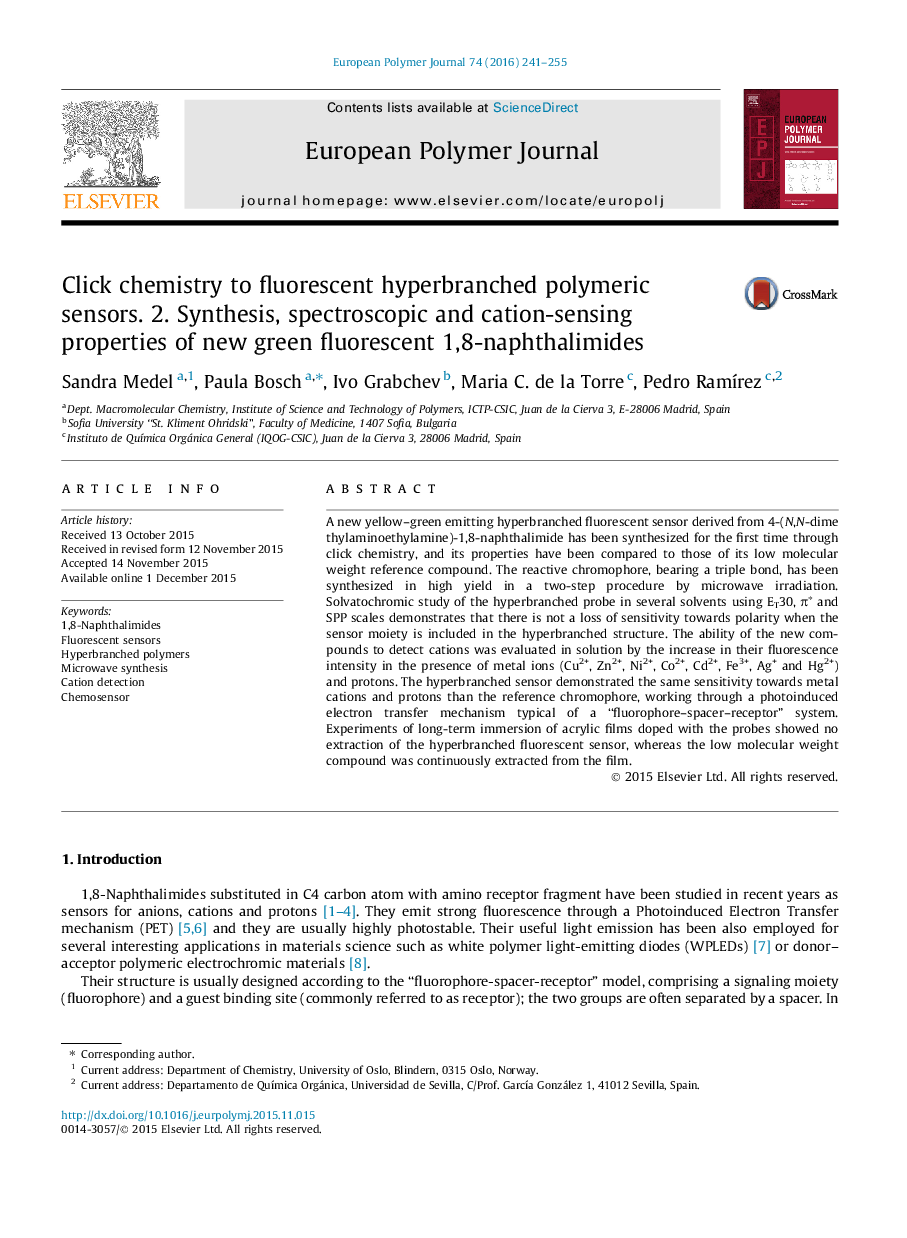| Article ID | Journal | Published Year | Pages | File Type |
|---|---|---|---|---|
| 1397799 | European Polymer Journal | 2016 | 15 Pages |
•Easy functionalization of a hyperbranched polymer with fluorescent groups.•Strong and quantitative fluorescence increase in the presence of cations.•HBP and model show same sensitivity towards polarity and metallic cations.•Films doped with the HBP probe show negligible long-term probe extraction.•New HBP probe shows highly promising behavior as chemosensor in polymeric media.
A new yellow–green emitting hyperbranched fluorescent sensor derived from 4-(N,N-dimethylaminoethylamine)-1,8-naphthalimide has been synthesized for the first time through click chemistry, and its properties have been compared to those of its low molecular weight reference compound. The reactive chromophore, bearing a triple bond, has been synthesized in high yield in a two-step procedure by microwave irradiation. Solvatochromic study of the hyperbranched probe in several solvents using ET30, π∗ and SPP scales demonstrates that there is not a loss of sensitivity towards polarity when the sensor moiety is included in the hyperbranched structure. The ability of the new compounds to detect cations was evaluated in solution by the increase in their fluorescence intensity in the presence of metal ions (Cu2+, Zn2+, Ni2+, Co2+, Cd2+, Fe3+, Ag+ and Hg2+) and protons. The hyperbranched sensor demonstrated the same sensitivity towards metal cations and protons than the reference chromophore, working through a photoinduced electron transfer mechanism typical of a “fluorophore–spacer–receptor” system. Experiments of long-term immersion of acrylic films doped with the probes showed no extraction of the hyperbranched fluorescent sensor, whereas the low molecular weight compound was continuously extracted from the film.
Graphical abstractFigure optionsDownload full-size imageDownload as PowerPoint slide
